More explorations in the north of Esmeraldas
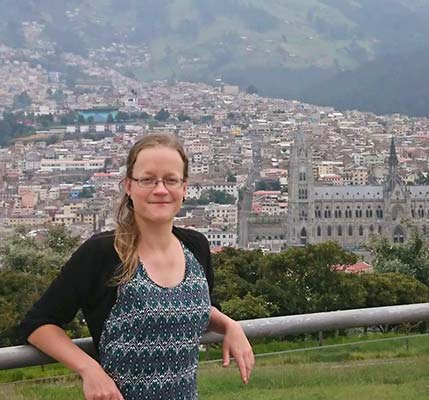
Maria S.
Last year I had already explored some places in the province of Esmeraldas, but I had not enough time to see everything I wanted to. Therefore, I decided to visit this area again this year.
A night trip by bus makes sense for me only from six hours driving time to be able to sleep reasonably and to arrive more or less refreshed at the destination. So this time I took the bus not directly to the city of Esmeraldas but to Muisne, a small coastal town in the south of the province, which I had not known before.
Breakfast in Muisne and continuing to Quinta El Mamey
My plan worked out. I arrived at the small bus terminal of Muisne shortly after sunrise.
The place is not directly on the open sea, but on a channel over which a bridge leads to an offshore island.
Since I wanted to have breakfast with a view of the sea, I crossed the bridge walking.
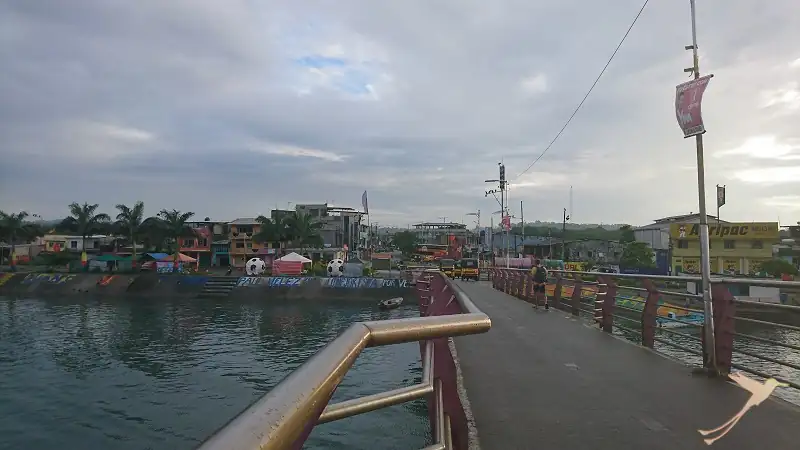
There were already many mototaxis on the road and in the channel the fishing boats were active. From the bridge I walked about a kilometer to the beach of Muisne Island. There I also found an already opened simple restaurant and had breakfast patacones with cheese and fried egg and enjoyed the view through the palm trees to the sea.
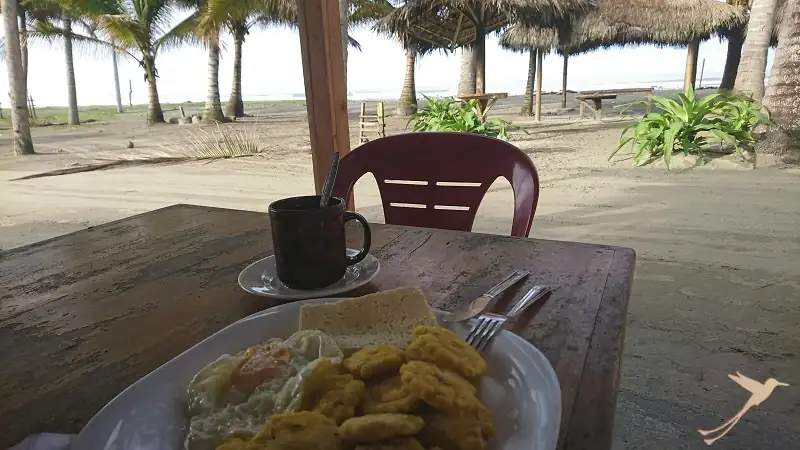
Since I still had some plans for today and did not want to arrive so late at my accommodation, the Quinta el Mamey, I did not stay so long in Muisne.
I walked back to the town center and took a bus from Muisne to Tonchigüe, another beach town I didn’t know yet.
The place itself, more of a small town, was not that attractive to me. So I went straight to the beach and walked along it towards Same, the neighboring town.
The beach section was nice, wide and clean and with beautiful views of the coastal landscape.
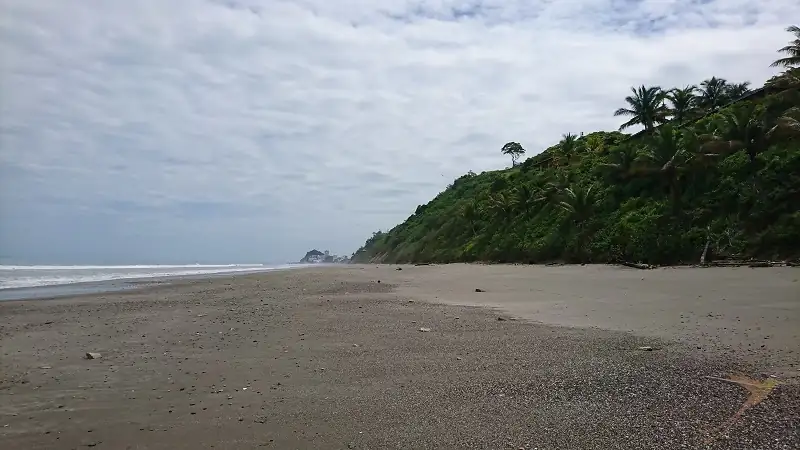
After about an hour I arrived at Same and treated myself to a big juice in one of the beach bars.
Then I took the bus via Atacames to the terminal of Esmeraldas and from there to Quinta El Mamey. I was happy to see Belinda and Nando, the Swiss-Ecuadorian owner couple again. I spent the rest of the day at the Quinta, enjoying the food, the pool and relaxing in the cozy outdoor seating area.
Reserva Majagual
My main destination today was the Manglares de Majagual mangrove forest. During my last stay in Esmeraldas I had already read a lot about it, but had not managed to go there.
It was a bit difficult to find information about the opening hours, or if it was possible to just go there or if you had to register. Under the online phone numbers no one was available, so I tried my luck and just drove there. Conveniently, the entrance is directly on the road to La Tola, where more or less regular buses go. I already knew the route from the last time and so I knew exactly where to get off. The entrance gate to the Reserva Majagual luckily was open. In the entrance area there was a car, but there was no one to be seen. In general, everything seemed a bit deserted, but since I was already there, I wanted to have a closer look at the mangroves. I looked first at the signs and information boards and then went the only possible way over a bridge and finally on a wooden footbridge into the mangrove forest.
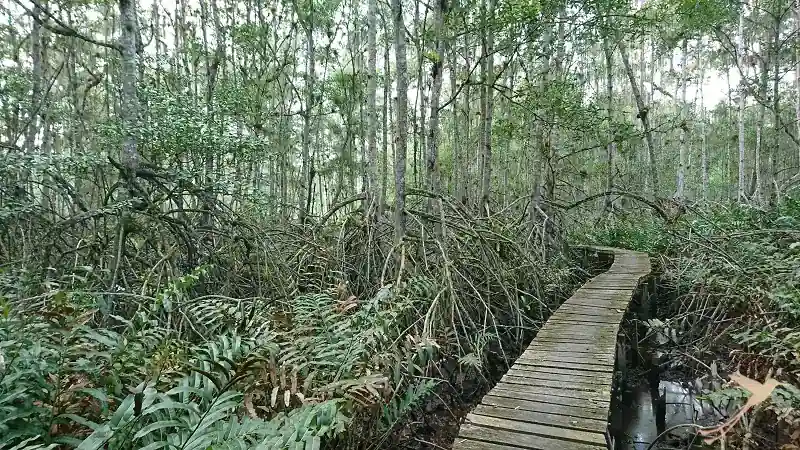
Majagual is part of the Manglares Cayapas-Mataje Ecological Reserve, which stretches from the northwest of Esmeraldas province to the Colombian border. Here there are the highest mangroves in the world, the tallest having a size of 65.2 meters. Five out of six mangrove species are native here and the forest is habitat for a variety of mollusks and crustaceans. The Manglares Cayapas-Mataje Reserve has also been classified as an Important Bird Area by BirdLife International.
The boardwalk leads about 200 meters into the forest. You walk back to the exit along the same path. So there is no danger of getting lost.
I was very impressed by the trees and especially the branched roots, some of which looked like legs. Many of the roots and branches were overgrown with bromeliads and mosses.
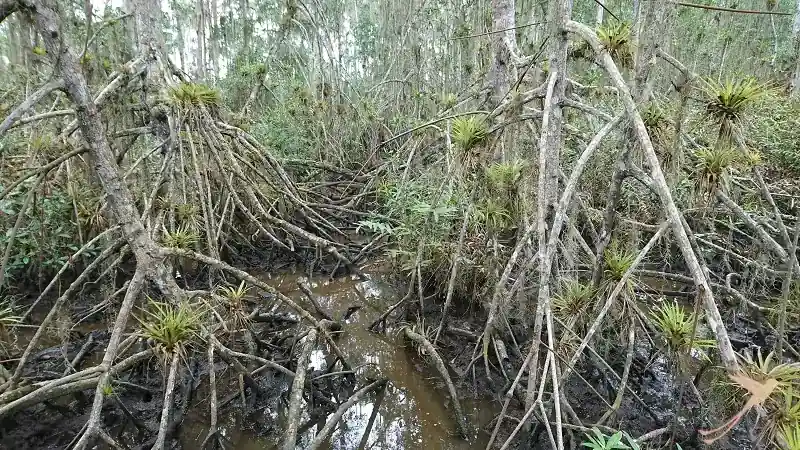
Along the bottom scurried small and large crabs in various shades of pink and red. However, they were always quickly disappeared into their holes before I could take a photo of them.
If you visit this area you should definitely apply plenty of insect repellent – the warm and humid climate is a paradise for mosquitoes. I also had light long clothes on and a headgear on despite the heat and was very glad about it.
Limones and Canchimalero
Since I had taken much less time than expected to visit the Reserva Majagual, I still had plenty of time for further exploration. I was drawn further into the north of the province.
At the gate of the Reserva I waited for a vehicle to La Tola, where I had already been last year. Soon a shared cab arrived and took me to the town. From the already known dock I took again a “ferry”, but this time not to Tolita Pampa de Oro but to Limones, still further in the interior of the peninsula. I did not know quite what awaited me, in Googlemaps one could only guess a collection of a few houses on green ground between two river estuaries.
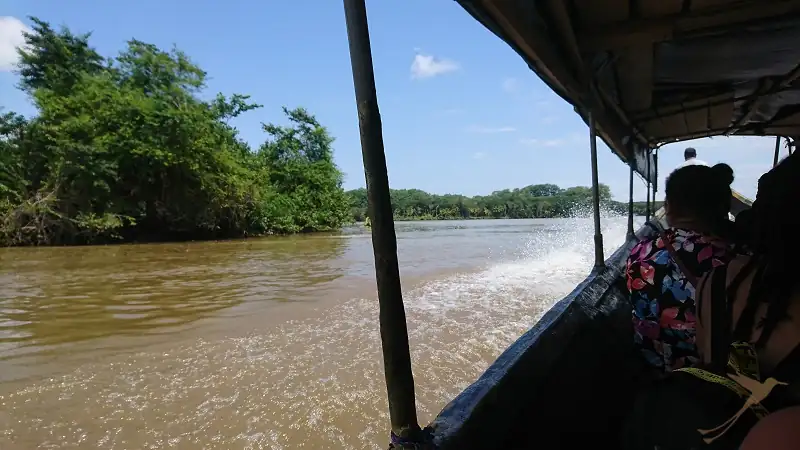
I was all the more surprised to arrive at a concrete dock after about 20 minutes of cruising on the river. Limones is a larger village with paved streets, stores, restaurants, a church in the main square and many other small boat docks. Since it was just the weekend after the Carnival holidays, many establishments were closed.
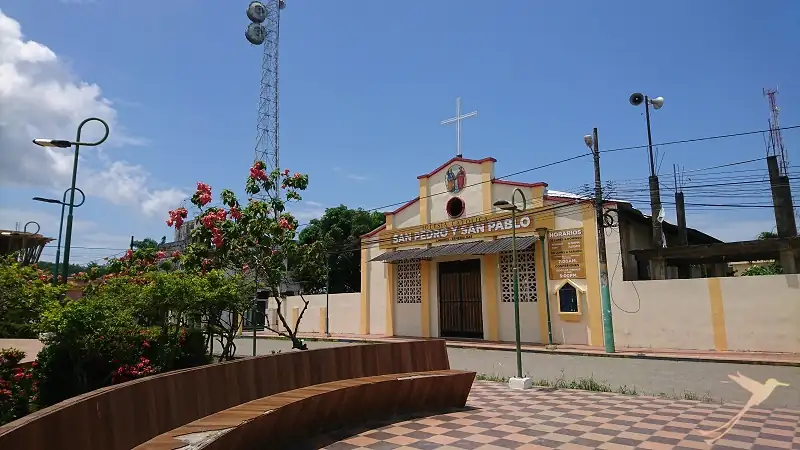
At a small stand I treated myself to an ice cream and inquired what interesting things could be done nearby. The ice cream vendor recommended that I visit Canchimalero, a small town on the other side of the river.
I went to one of the small docks as described and some of the fishermen there waved a motor canoe over. After a quick, bumpy ride of about 5 minutes, I got out of the canoe on the beach at Canchimalero.
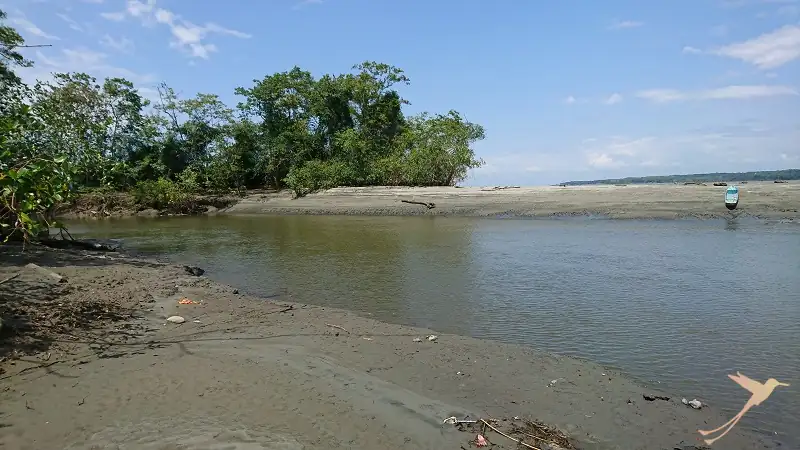
Now this was really a place as I had imagined it in this area: about 20 simple wooden huts on a meadow or on sandy paths. The only fixed building was the church just behind the covered sports field. As small and insignificant as the place seems, it is nevertheless well-known in the whole region. Because every year on the 3rd of November a big festival in honor of San Martin del Porres takes place here. Then about 5000 visitors make a pilgrimage with decorated boats from the various inflows across the Rio Santiago to Canchimalero.
During my visit, however, there was nothing to notice. It was wonderfully quiet and I could observe some water birds.
While waiting for a boat to take me back to Limones, I conversed with a local who even showed me the inside of the pretty little church.
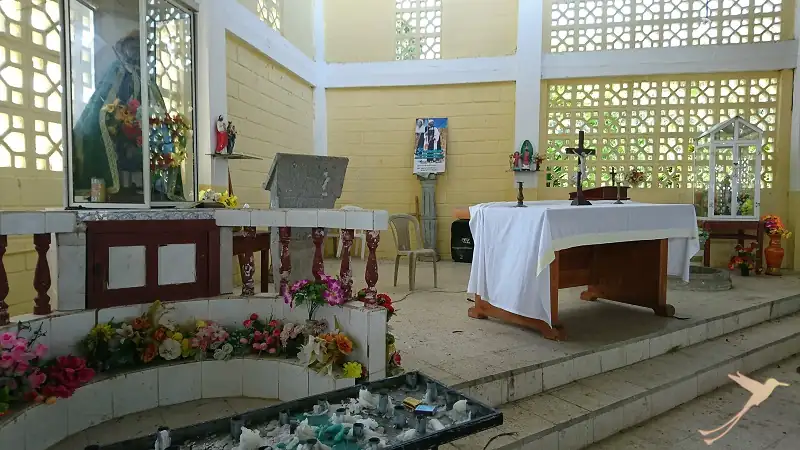
Finally, I could go on a boat, in which among other things three gigantic buckets with palms were transported, to the dock of Limones. There soon came the “ferry” to La Tola and from there I took the bus back to Quinta El Mamey.
It was an exciting, and, especially because of the heat, also somewhat exhausting day with many new impressions.
The next day I had a relaxed breakfast and then made my way back to Quito via Esmeraldas.
Again, this was certainly not my last visit to the north of Esmeraldas. There is still much to discover and explore and I am already looking forward to the next time.
If you also want to get to know the coast of Ecuador and its other regions feel free to get in touch with us. We will be happy to organize a customized trip for you.
visit our other channels
Recent Posts
- From Manglaralto to Pacoche and surroundings April 18, 2024
- Excursions within the rainforest region of Ecuador April 5, 2024
- Ecuador in a state of emergency?! My personal experience March 22, 2024
- The 10 most beautiful lakes and lagoons in Ecuador – Part 2 March 12, 2024
- The 10 most beautiful lakes and lagoons in Ecuador – Part 1 February 23, 2024